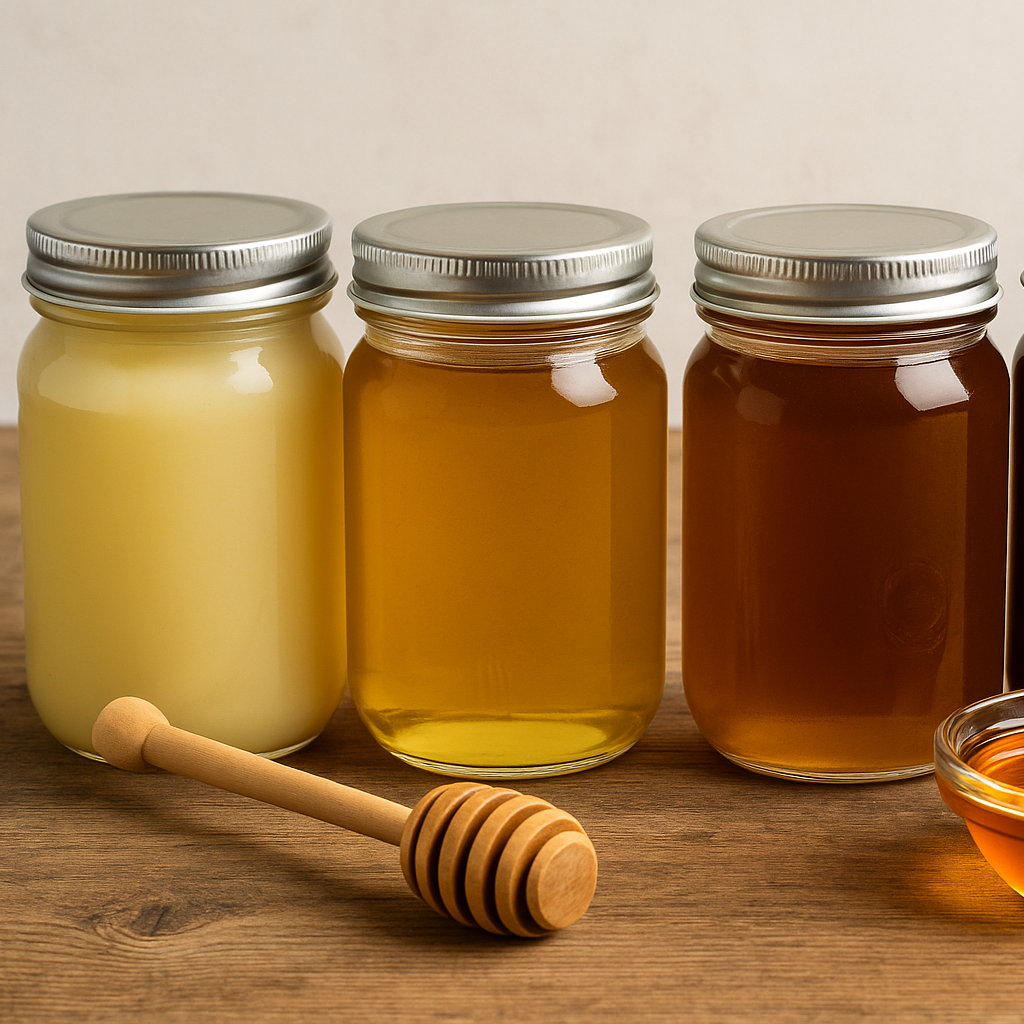Your Cart is Empty
Welcome to the fifth installment of our blog series,The Golden Elixir – All About Honey Wine. Today, we delve into the intricate relationship between honey and mead, exploring how different honeys shape the flavour profile of this ancient beverage. From regional honey varieties to ethical sourcing, understanding these elements is crucial for both novice and seasoned mead makers.
The type of honey used in mead making significantly affects the final product's taste, aroma, and colour. Each regional honey variety brings its unique characteristics:
Clover Honey: Light and floral, clover honey imparts a mild sweetness, making it a versatile choice for various mead styles.
Wildflower Honey: Derived from diverse floral sources, its flavour can range from fruity to herbal, depending on the region and season.
Buckwheat Honey: Dark and robust, buckwheat honey offers earthy and malty notes, suitable for bold meads.
Orange Blossom Honey: With citrus undertones, it adds a zesty twist to meads, enhancing their complexity.
Tupelo Honey: Known for its smooth texture and fruity nuances, it's a prized variety among mead enthusiasts.
Selecting the right honey aligns with the desired flavour profile, allowing mead makers to craft beverages that reflect regional terroir and personal taste preferences.
Ethical honey sourcing ensures the well-being of bee populations and the environment. Consider the following practices:
Support Local Beekeepers: Purchasing from local apiaries promotes sustainable practices and reduces carbon footprints.
Inquire About Beekeeping Methods: Ethical beekeepers avoid practices like overharvesting and provide bees with natural foraging opportunities.
Avoid Mass-Produced Honey: Commercial honey often involves intensive practices that can harm bee health and biodiversity.
Check for Certifications: Labels like "organic," "raw," or "unfiltered" can indicate more sustainable production methods.
By choosing ethically sourced honey, mead makers contribute to environmental conservation and the preservation of bee populations.
Flavour Profile: Understand how different honeys influence mead taste.
Colour and Clarity: Honey type affects the visual appeal of mead.
Fermentation Behaviour: Some honeys ferment more readily than others.
Availability: Choose honeys that are accessible and sustainable.
Cost: Balance quality with budget constraints.
Ethical Sourcing: Prioritize honeys from responsible producers.
Seasonality: Be aware of seasonal variations in honey availability.
Storage: Properly store honey to maintain its quality.
Blending: Experiment with honey blends for unique flavours.
Supplier Reputation: Research and select reputable honey suppliers.
When sourcing honey for mead making, consider the following:
Transparency: Suppliers should provide information about honey origin and production methods.
Quality Assurance: Look for suppliers who conduct regular quality checks and provide certifications.
Sustainability Practices: Choose suppliers committed to environmentally friendly practices.
Customer Reviews: Research feedback from other mead makers to gauge supplier reliability.
Establishing a relationship with a trustworthy supplier ensures consistent quality and supports sustainable mead production.
Comments will be approved before showing up.
